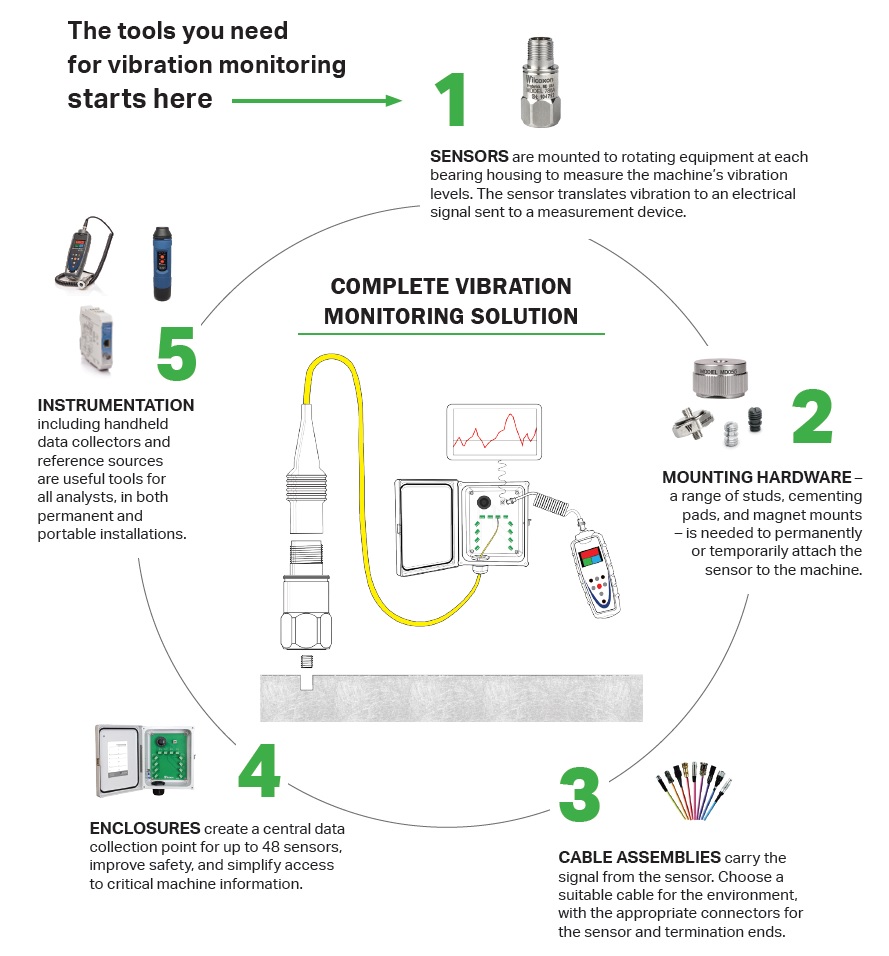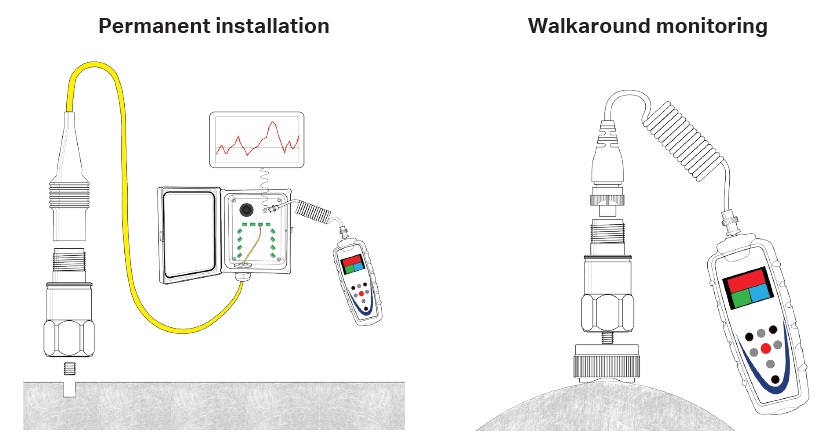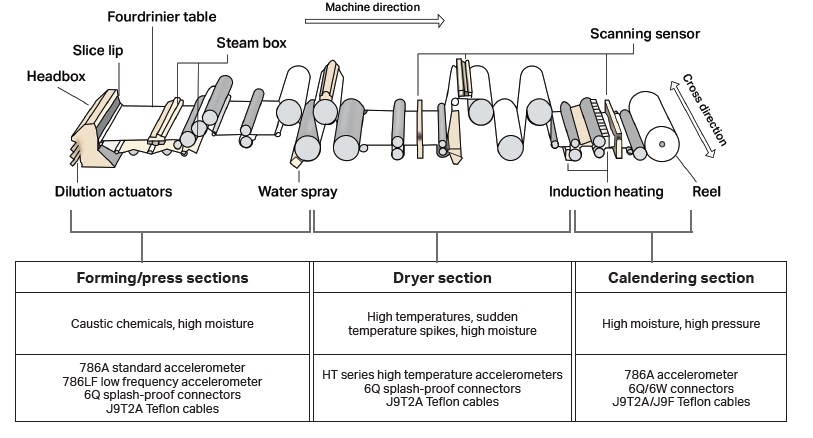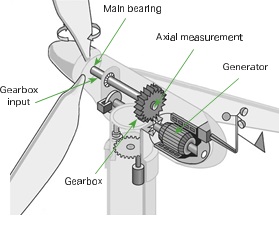Wilcoxon - manufacturer of reliable, high-quality vibration monitoring products
Maritex would like to inform you about expanding our portfolio with high-quality vibration monitoring products from Wilcoxon Sensing Technologies
Wilcoxon Sensing Technologies has a strong history of providing market-leading products for demanding industrial, marine, and defense applications. Since 1960, Wilcoxon has been and continues to be a worldleading manufacturer and supplier of high-quality vibration monitoring products known for their reliability, long life, and excellent value. As an ISO 9001:2015 certified company, They are committed to setting the industry standard for quality of design, manufacture, assembly, and distribution of vibration sensors, underwater acoustic sensors, and related equipment.
In 2017, the Wilcoxon brand was purchased by the Amphenol Corporation, one of the largest manufacturers of interconnect products in the world. Wilcoxon has been integrated into the Amphenol Sensor Technology Group.

A machine’s vibration levels indicate its condition. Developing faults appear as changes in vibration, often before other signs are noticeable, and specific machine problems show particular patterns of changing vibration levels, making fault identification easier and more accurate.
If you know which machines need maintenance, what the problems are, and how soon to address them, your predictive or preventative maintenance program is more effective and operations are more efficient.
How to incorporate vibration data into your monitoring setup will depend on your program’s needs, but there are two basic approaches: permanent installations or walkaround monitoring.

A permanent installation provides reliable data and simplifies access to machine information.
Benefits include:
- remote access from the measurement point
- access to multiple readings in central location
- reduces measurement time
- full frequency range of the sensor is available
- improved safety
- continuous monitoring of changing vibration
Some drawbacks:
- higher cost for dedicated sensors, cabling, and mounting hardware
- lacks flexibility to check different measurement points
Walkaround routes allow flexibility and are often used with fewer measurement points.
Benefits include:
- lower cost alternative to installing dedicated sensors at each measurement point
- offers flexibility in checking different measurement points
- useful for establishing baselines prior to permanently mounting sensors
Some drawbacks:
- poor repeatability of readings
- limitation in frequency range
- safety risks to personnel from moving parts or unsafe conditions

With the high number of rotating machines found in pulp and paper manufacturing facilities, there’s a huge potential benefit to vibration monitoring. High temperature accelerometers with reliable performance up to 150°C are ideal for use on rotating components in dryer sections, and rugged IP68 rated connectors and cables have the chemical and heat resistance needed throughout the plant.


With the variety of hazardous locations found throughout refineries and the high cost of unscheduled downtime, vibration sensors with Class I certifications are a good investment. Wilcoxon offers intrinsically safe sensors for dynamic data and explosion-proof sensors for 24/7 trend data to fulfill the complex requirements of refineries.

| Class I, Div 1 (Zone 0/1) | Explosion-proof (EX) | Class I, Div 2 (Zone 2) |
| 786A-IS, 787A-IS intrinsically safe accelerometers PC420-IS certified 4-20 mA sensors IS safety barrier strips |
PC420VP-EX explosion-proof | 4-20 mA sensors 786A-D2, 786-500-D2, 787A-D2 certified accelerometers R6D2-0-J9T2A cable assemblies |

Vibration monitoring plays an essential role in an effective predictive maintenance program. Plants with pumps, motors, fans, or any rotating machines that are critical to operations can benefit from vibration data indicating changes in machine condition or early fault detection. Sensing solutions are available for every application.
| 786A, 787A | Accelerometers for general machine monitoring on motors, fans, pumps, and gear mesh |
| R6W-J10 | IP67 cable assemblies for permanent installations and flexible cable routing |
| MAC800 / REF2510R | Handheld meters and vibration reference sources for walkaround monitoring programs |
| PC420 series | 4-20 mA sensors for process applications |
| Mounting hardware | Studs, adhesives, cementing pads, isolators, and accessories for permanent or temporary installations |
| VL enclosures | Switchboxes provide a central data collection point to avoid lengthy data-collection routes |

Monitoring programs for wind turbines face unique technical challenges, with important slow turning machinery and the potential for high electromagnetic interference. Generators should be monitored with highly isolated sensors and foil shielded cable for improved EMI resistance, while the turbine’s main bearing can be monitored with high sensitivity, low frequency sensors. Gear mesh faults are detectable with general purpose accelerometers.

| Generators | High voltage sensors: HV100/HV200 HV100LF/HV200LF J9F foil shielded cable assemblies |
| Main bearing | Low frequency sensors: 786LF-500, 787-500 HV100LF-500, HV201LF-500 |
| Gearbox | General purpose accelerometers: 780A, 786A, 787A |

Chemical processing facilities rely on cooling towers to recycle water and help complete their processes. Vibration measurements on fans, motors, and gearboxes can help identify problems such as misalignment and imbalance before failure causes unexpected downtime.
| 786LF-500, 797L | Low frequency accelerometers for measurements on slow-turning fan shaft |
| R6Q-J9T2A, 786F | IP68 rated cable/connector assemblies with high chemical resistance, integral cable sensors |
| VL enclosures | Switchboxes to provide a central data collection point and shorten active collection time |

Sensors, cable assemblies, and mounting accessories with radiation resistance up to 107 RADs make vibration monitoring possible on critical machines in nuclear power plants.
| 793R, 797R | Radiation resistant accelerometers for gearboxes and high frequency analysis |
| 793VR | Radiation resistant velocity sensors for general machinery analysis |
| R6QN connectors, J9T2 cables | Neoprene connectors and Tefzel cable (optional stainless steel braid) for chemical resistance and material approvals |

Extremely low frequency applications, such as construction zones for tunnels and bridges, earthquake detection and engineering, and structural health monitoring use seismic sensors to detect changes that affect critical infrastructure or indicate seismic activity.
| 731A/P31 | Accelerometer/power amplifier system with 10 V/g sensitivity |
| 731-207 | Compact seismic sensor |
| J9T2A / J9F cable | Low noise, Teflon jacketed cable to protect the signal from electrical interference |
| 799M | Accelerometer with 1 V/g output for high sensitivity and intermediate frequency response |

Vibration monitoring is useful at several stages of the cement manufacturing process. Critical fans, motors, and conveyors can be monitored for signs of developing faults with sensing solutions that work in environments with dust, debris, and high temperatures.
| PC420V series, 786A, 787A | 4-20 mA velocity sensors, standard accelerometers to detect machine imbalance |
| 787A, R6Q-J9T2A | Side exit, hermetically sealed sensors and IP68 rated cable assemblies for contamination protection |
| HT series, R6Q-J9T2A | High temperature accelerometers and cable assemblies for kiln areas |
| 786A, 787A | Accelerometers to detect belt drive misalignment using dynamic analysis of vibration data |
| iT300, iT301 | Transmitters for field-configurability and connection to plant infrastructure, enabling dynamic analysis |

Maximizing operational uptime and efficiency is paramount in mining operations. Establishing baseline vibration levels and continuously trending data from key components helps to detect machine faults early, helping you reduce overall maintenance costs and keep working.
| PC420 series, 786A, 787A | Sensors with broad frequency response for detecting gear mesh faults, monitoring geared motors and belts in conveyor drive system, and continuous monitoring of machines running 24/7 |
| R6Q-J9T2A, 786F | IP68 rated cabling and watertight sensors to detect pump corrosion |
| 786A, 786A-I + iT300 | High frequency sensors, transmitters for field-configurability and connection to plant infrastructure to detect bearing damage or fatigue |
- Overall vibration level
The vibration level on most machines is unlikely to be high enough to cause sensor overload or require a specialty sensor, but certain faults can produce high vibrations. When choosing a sensor, consider which faults are most likely to develop and which are of interest for the machine along with baseline machine vibration.
- Frequency range of interest
Depending on the size and type of machine, the location where the sensor will be mounted, and the number of components (among other factors), the frequency range being measured can vary. A sensor should be able to capture the appropriate frequencies and output reliable data.
- Acceleration vs. velocity
Accelerometers should be used in most applications on most machinery. Piezovelocity sensors are well-suited for monitoring mid-frequency vibrations on common rotating machines; at very high or low frequencies (above 10 kHz or below 1 Hz), specialty accelerometers are a better choice.
- Temperature range
If operating temperatures won’t exceed 120°C (248°F), most standard accelerometers are a good choice; above that, choose an HT series sensor, which performs well up to 150°C. Sensor response varies more at high temperatures, which can affect measurement accuracy and should be factored into your analysis.
- Environmental considerations
Make sure to measure the ambient temperature, humidity, and moisture levels, determine whether any contaminants such as dust, liquids, debris or corrosive chemicals are present, and check for nearby sources of interference (unusually high EMI, RFI, or ESD). Sensors to be used in hazardous areas should have the correct certification requirements.
The complete range of vibration sensors can be found here
We offers a wide variety of rugged cables and connectors to ensure data reliability. Several of our most popular cable assemblies in standard lengths you can find here , while custom cable assemblies are built to meet your individual requirements.
The full range of cables and connectors with technical details can be found here
In case of technical questions feel free to contact us by phone: +48 58 662 05 79 or e-mail: sensor@maritex.com.pl
Source: Wilcoxon Sensing Technologies – https://wilcoxon.com/

 se
se 


